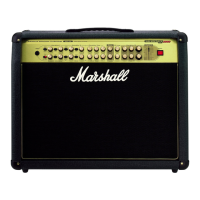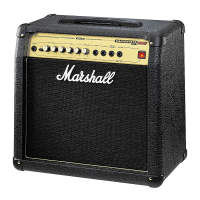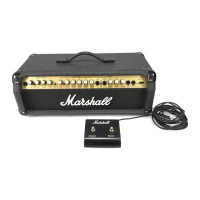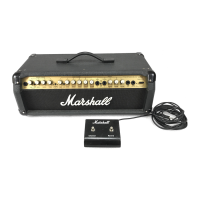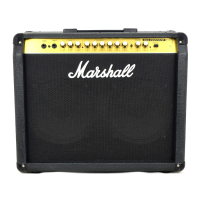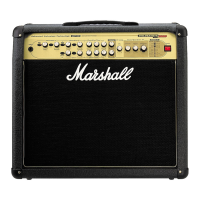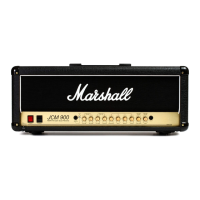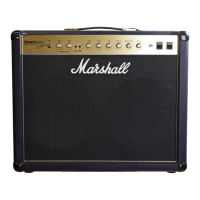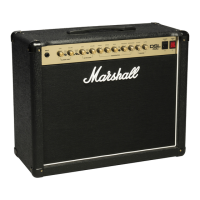Introduction (cont.)
ENGLISH
5
DFX Onboard
At Marshall our aim is to create products that offer our fellow guitarists true inspiration in the
practice and performance of their art. When integrating DFX (Digital Effects) into the tonal topology
of AVT, the greatest care was taken to ensure that the highest level of signal integrity was
maintained. Through careful shaping and mixing of the ‘wet’ (processed) and ‘dry’ (unprocessed)
signals, we have ensured that the onboard effects enhance your tone while adding none of the
nasty, artificial ‘grain’ often associated with DFX. Different effect types can be assigned to the Clean
and Overdrive channels and can, of course, be turned on and off via the sturdy 6-way LED foot
controller supplied with your amp.
We are so proud and enthused by the end results of our labour that we feel fully justified in
hailing Advanced Valvestate Technology as a major breakthrough in hybrid guitar amplifier design.
We are convinced that you will derive as much pleasure from playing them as we did while
designing them. Enjoy!
AVT150/AVT150H & AVT275 Front Panel Features
I. The Preamp Section
Your AVT amp boasts no fewer than four
channels: Acoustic Simulator, Clean, Overdrive 1
and Overdrive 2. The preamp section is where
the gain, tone and relative volume of these four
channels is determined.
1 Input Jack Socket
This is where you plug your guitar into the
amp. You must always use a screened
(shielded) guitar cable and never use an
unscreened (unshielded) speaker cable. Also,
this cable should be one of good quality. If you
are in any doubt regarding this, your Marshall
dealer will be more than happy to help and
advise you.
2 Acoustic Simulator Channel
Selector Switch
Allows selection of the Acoustic Simulator
channel via the front panel.
3 Top Control
This control takes the channel’s sound
from a mellow, acoustic tone (similar to a
microphone placed towards the neck of the
instrument) all the way to a bright, piezo-like
acoustic sound and all points in-between.
Note:
The amp’s Master Presence control (21)
affords you further adjustment of the high end.
4 Body Switch
This changes the ‘body resonance’
simulation of the channel from that of a regular
sized, steel-string acoustic (switch ‘out’) to that
of a large bodied, ‘Jumbo’ acoustic (switch ‘in’).
5 Volume Control
This dictates how loud the Acoustic
Simulator Channel will be.
6 Clean Channel Selector Switch
This allows selection of the Clean channel
via the front panel.
7 Clean Channel Gain Control
This rotary control regulates the drive into
the two cascaded valve stages of the preamp.
Lower settings will give you a wide range of
well defined, warm clean tones.
At higher Gain settings you will pass
through natural, valve-induced compression
and into an increased level of desirable ‘break-
up’ (a.k.a. ‘crunch’) which is perfect for subtly
overdriven blues/rock.
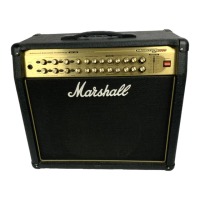
